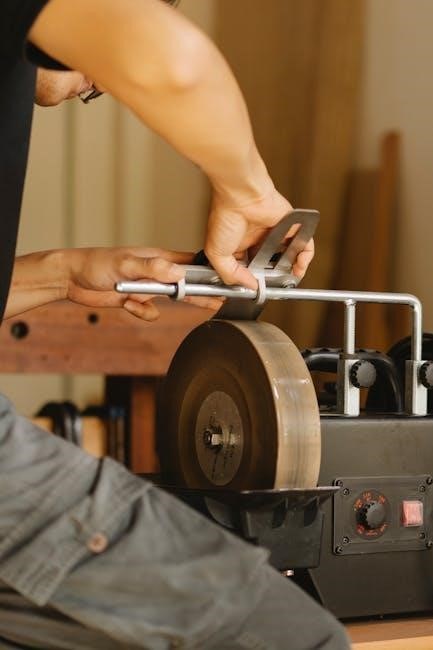Manual and electric breast pumps are essential tools for expressing milk, catering to different needs and preferences. Manual pumps are hand-operated, portable, and affordable, while electric pumps offer efficiency and convenience, ideal for frequent use. Both options provide solutions for breastfeeding mothers, though they vary in functionality and suitability for various lifestyles.
1.1 Overview of Manual Breast Pumps
Manual breast pumps are hand-operated devices designed for expressing breast milk without electricity. They are typically compact, lightweight, and portable, making them ideal for occasional use or as a backup option. These pumps require manual suction, often through a handle, and allow mothers to control the pressure and rhythm. They are generally quieter and more discreet compared to electric pumps, offering a simple and cost-effective solution for breastfeeding mothers who need to express milk infrequently or in situations where electricity is unavailable.
1.2 Overview of Electric Breast Pumps
Electric breast pumps are motorized devices designed to express breast milk efficiently and with minimal effort. They often feature adjustable settings for suction strength and speed, allowing mothers to customize the experience. These pumps are ideal for frequent or long-term use, as they save time and reduce manual labor. Electric pumps are typically faster and more efficient than manual ones, making them a popular choice for mothers who need to express milk regularly, especially in situations where convenience and speed are prioritized.

Key Features of Manual Breast Pumps
Manual breast pumps are portable, affordable, and offer precise control over suction. They are lightweight, easy to clean, and ideal for occasional or travel use.
2.1 Portability and Affordability
Manual breast pumps are highly portable and budget-friendly, making them an excellent choice for mothers seeking convenience. Their compact design allows easy transport in bags or purses, perfect for on-the-go use. Additionally, manual pumps are generally more affordable than electric models, often priced under $50, making them accessible to those with limited budgets. This affordability and portability make manual pumps a practical option for mothers who need a reliable backup or occasional use solution;
2.2 Manual Operation and Control
Manual breast pumps require hand operation, allowing mothers to control the suction and rhythm personally. This feature provides a natural, comfortable experience, as the user can adjust the pressure according to their preference. The lack of motor noise also makes manual pumps quieter and more discreet. However, manual operation demands effort and time, especially for frequent or extended use. Despite this, the ability to tailor the experience makes manual pumps appealing for those who value precise control and a more intimate connection to the pumping process.

Key Features of Electric Breast Pumps
Electric breast pumps offer adjustable settings, efficient suction, and convenient speed control, making them ideal for regular and frequent milk expression with minimal effort required.
3.1 Adjustable Settings and Efficiency
Electric breast pumps feature adjustable settings for suction strength and speed, allowing customization to match individual comfort and expression needs. These pumps are highly efficient, offering faster milk expression with minimal effort. Their ability to mimic a baby’s natural nursing rhythm enhances milk letdown and overall output. This adaptability makes electric pumps ideal for mothers who need to express milk frequently or build a substantial milk supply. The efficiency and customization options ensure a more effective and comfortable pumping experience compared to manual alternatives.
3.2 Speed and Suction Power
Electric breast pumps excel in speed and suction power, enabling quick and effective milk expression. They often feature multiple suction levels, allowing mothers to customize the intensity for comfort and efficiency. Compared to manual pumps, electric models significantly reduce pumping time, making them ideal for busy schedules. The powerful suction mimics a baby’s feeding pattern, promoting a faster letdown reflex and maximizing milk output. This combination of speed and strength ensures electric pumps are more efficient for regular or high-volume pumping needs.

Pros and Cons of Manual Breast Pumps
Manual breast pumps are portable, affordable, and quiet, offering control over suction for a natural experience. They are ideal for occasional use but require more effort and time, making them less efficient for frequent pumping. While they provide comfort and simplicity, they may not be as effective for establishing a robust milk supply, making them a suitable choice for moms seeking a straightforward, low-cost option.
4.1 Advantages of Manual Pumps
Manual breast pumps offer several advantages, including portability, affordability, and quiet operation. They are lightweight and easy to carry, making them ideal for travel or occasional use. Manual pumps also provide precise control over suction strength, allowing for a more natural pumping experience. Additionally, they are cost-effective, with most models priced under $50, making them an accessible option for many mothers. Their compact design ensures discreet use, and they require no electricity, adding to their convenience in various settings.
4.2 Disadvantages of Manual Pumps
Manual breast pumps require more effort and time, as they rely on hand operation, which can be tiring, especially for frequent use. They often pump only one breast at a time, doubling the time needed for expressing milk. Additionally, manual pumps may lack the suction power of electric models, potentially making milk expression less efficient. Some users also report arm fatigue during extended use. These drawbacks make manual pumps less suitable for mothers who need to pump regularly or express large volumes of milk.

Pros and Cons of Electric Breast Pumps
Electric breast pumps offer faster and more efficient milk expression with adjustable settings, ideal for frequent use. However, they are generally more expensive, bulkier, and may be noisier compared to manual pumps.
5.1 Benefits of Electric Pumps
Electric breast pumps are faster, more efficient, and require less manual effort, making them ideal for frequent or long-term use. They often feature adjustable speed and suction settings, allowing for a more personalized experience. Many models are portable, with rechargeable batteries, and some are even wearable, offering discreet pumping on the go. These pumps are particularly beneficial for mothers with busy lifestyles or those who need to express milk regularly, as they save time and reduce fatigue compared to manual options.
5.2 Drawbacks of Electric Pumps
Electric breast pumps can be more expensive and bulky, making them less portable compared to manual pumps. They may also be noisier and require a power source, which can be inconvenient in certain situations. Additionally, electric pumps often have more parts, which can complicate cleaning and maintenance. Some users may find the dependency on electricity or batteries limiting. Despite their efficiency, these drawbacks can make electric pumps less ideal for occasional or travel use, where a manual pump might be more practical.

Choosing the Right Breast Pump for Your Needs
Selecting between manual and electric breast pumps depends on lifestyle, frequency of use, and personal comfort. Consider portability, budget, and pumping frequency to make an informed decision.
6.1 Lifestyle Considerations
Lifestyle plays a crucial role in choosing a breast pump. Busy mothers who need to pump frequently may prefer electric pumps for efficiency and speed. Those with active lifestyles or limited access to electricity may opt for manual pumps due to their portability and ease of use. Additionally, mothers who value convenience and are willing to invest in a reliable device often lean towards electric models, while those on a budget or preferring a simple, lightweight option may choose manual pumps. Considering daily routines and personal preferences ensures the best fit for individual needs.
6.2 Personal Comfort and Preference
Personal comfort and preference significantly influence the choice between manual and electric breast pumps. Electric pumps often provide greater comfort for mothers who value ease of use and require less physical effort, while manual pumps appeal to those who prefer a quieter, more controlled experience. Some mothers prioritize the portability and simplicity of manual pumps, while others find electric pumps more comfortable for frequent or long-term use. Ultimately, individual comfort needs and personal preferences guide the decision, ensuring a positive pumping experience.

When to Use Manual vs. Electric Breast Pumps
Manual pumps are ideal for occasional, small-scale use and travel, while electric pumps are better for frequent, time-efficient pumping sessions and establishing milk supply effectively.
7.1 Situations for Manual Pumps
Manual breast pumps are ideal for occasional use, travel, or as a backup option. They are lightweight, portable, and affordable, making them perfect for small-scale expressing. Manual pumps are also quieter and offer more control over suction, which can be beneficial for mothers who prefer a gentle expression. Additionally, they are a great choice for mothers who need to express milk infrequently or in situations where electricity is unavailable, ensuring flexibility and convenience without relying on a power source.
7.2 Situations for Electric Pumps
Electric breast pumps are best for frequent or long-term use, offering convenience and efficiency. They are ideal for mothers who need to express milk regularly, such as those returning to work or with busy schedules. Electric pumps are faster and require less effort, making them suitable for expressing large volumes of milk. They are also recommended for mothers who need to establish or maintain milk supply and for those who prefer a hands-free pumping experience, saving time and reducing fatigue.

Maintenance and Care of Breast Pumps
Regular cleaning and sanitizing are crucial for hygiene. Proper storage and inspection ensure longevity. Follow manufacturer guidelines to maintain optimal performance and safety standards.
8.1 Cleaning and Sanitizing
Cleaning and sanitizing breast pumps are vital for maintaining hygiene and preventing bacterial growth. Wash all parts with mild soap and warm water after each use. Rinse thoroughly and sanitize using boiling water, a dishwasher, or a UV sterilizer. Electric pumps may require additional care for motors, while manual pumps focus on detachable components. Regular maintenance ensures safety and longevity, keeping the pump effective for expressing milk. Always follow manufacturer guidelines for specific cleaning instructions.
8.2 Storage and Longevity
Proper storage is key to extending the life of breast pumps. After cleaning, ensure all parts are dry before storing in a cool, dry place. For electric pumps, detach and store cords separately to prevent damage. Manual pumps can be stored in small bags for convenience. Regularly inspect for wear and tear, and replace worn parts promptly. Follow manufacturer guidelines for storage to maintain functionality and longevity. Proper care ensures your pump remains effective and durable for extended use.
Choosing between manual and electric breast pumps depends on individual needs and lifestyles. Manual pumps offer portability and affordability, ideal for occasional use, while electric pumps provide efficiency and convenience for frequent pumping. Both options have unique benefits and drawbacks, and the decision should align with personal preferences, budget, and usage frequency. By considering factors like comfort, convenience, and practicality, mothers can select the best pump to support their breastfeeding journey effectively.
